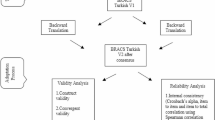Abstract
Lack of uniformity in reporting facial nerve recovery in patients with facial nerve paralysis has been a major disadvantage in comparing treatment modalities. To remove subjectivity from the analysis, we devised a facial paralysis recovery profile as a system for measuring facial motion. This profile has been used since 1968 at Kaiser Permanente Medical Center, Oakland, California. The House facial paralysis grading system was introduced in 1983 for clinical use and was modified by Brackmann in 1985. This latter system has since been accepted by the American Academy of Otolaryngology-Head and Neck Surgery in the United States as the standard used in reporting results. In a prospective study of 54 patients, we tested multiple parameters that affect accurate reporting. We tested reliability and accuracy of facial measurements by using 30 control subjects and 3 independent examiners. We used Pearson correlation coefficients to statistically analyze results. To compare our system with the House-Brackmann grading system, we measured facial motions of 24 patients randomly selected from our data bank. All had incomplete returns of facial function and facial defects associated with faulty regeneration of a partially denervated facial nerve. Our overall results show defects in the House-Brackmann system which should be addressed. We offer the Adour-Swanson grading system as a reliable, easy-to-use, suitable alternative to the House-Brackmann system.
Similar content being viewed by others
Reference
Adour KK, Swanson PJ Jr (1971) Facial paralysis in 403 consecutive patients: emphasis on treatment response in patients with Bell's palsy. Trans Am Acad Ophthalmol Otolaryngol 75: 1284–1301
House JW (1983) Facial nerve grading systems. Laryngoscope 93:1056–1069
House JW, Brackmann DE (1985) Facial nerve grading system. Otolaryngol Head Neck Surg 93:146–147
Murty GE, Diver JP, Kelly PJ, O'Donoghue GM, Bradley PJ (1994) The Nottingham System: objective assessment of facial nerve function in the clinic. Otolaryngol Head Neck Surg 110:156–161
Neely JG, Jekel IF, Cheung JY (1994) Variations in maximum amplitude of facial expressions between and within normal subjects. Otolaryngol Head Neck Surg 110:60–63
SAS Institue Inc (1987) SAS/STAT guide for personal computers, version 6 edition. SAS Institute Inc, Cary, North Carolina
Wood DA, Hughes GB, Secic M,Good TL (1994) Objective measurement of normal facial movement with video microscaling. Am J Otol 15:61–65
Author information
Authors and Affiliations
Rights and permissions
About this article
Cite this article
Lewis, B.I., Adour, K.K. An analysis of the Adour-Swanson and House-Brackmann grading systems for facial nerve recovery. Eur Arch Otorhinolaryngol 252, 265–269 (1995). https://doi.org/10.1007/BF00185387
Received:
Accepted:
Issue Date:
DOI: https://doi.org/10.1007/BF00185387




